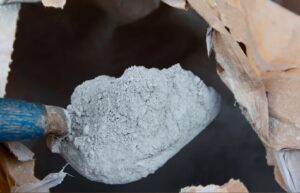Pruning is a crucial part of maintaining healthy and productive fruit trees. Done correctly and at the right time, pruning encourages better air circulation, improves sunlight exposure, and stimulates new growth. However, the frequency and technique of pruning can vary depending on the tree type, age, and overall health.
If you want your fruit trees to flourish year after year, understanding the right approach to pruning is essential. Below are five key considerations to help guide you.
Prune Once a Year During Dormant Season
For most fruit trees, the ideal time to prune is once a year during the late winter or early spring while the tree is still dormant. Pruning during dormancy encourages vigorous growth in the spring and helps shape the tree before it becomes active. It also reduces the risk of disease transmission, as many harmful organisms are inactive during colder months.
Avoid heavy pruning during summer or autumn, as this can leave the tree vulnerable and stress its natural growth cycle.
Young Trees Need More Frequent Attention
Newly planted or young fruit trees benefit from more frequent, lighter pruning during their first few years. This helps establish a strong framework, prevents overcrowding of branches, and trains the tree into an optimal shape for fruit production.
Seasonal inspections to remove suckers, competing leaders, or downward-growing limbs will contribute to healthier development. Once the tree reaches maturity, it generally requires only one major pruning session each year.
Hire a Professional for Tree Trimming When Needed
Although many homeowners handle basic pruning themselves, there are situations where hiring a professional tree trimming service is highly recommended. If your tree is large, overgrown, or positioned near power lines or buildings, trimming it can become risky.
Certified arborists have the proper tools, safety training, and expertise to prune efficiently without harming the tree or surrounding property. They can also assess the tree’s health and make recommendations for disease control or improved fruit yield, ensuring long-term success.
Consider Tree Removal Service for Non-Productive or Diseased Trees
Sometimes, despite your best efforts, a fruit tree may become severely diseased, structurally unsound, or stop producing quality fruit. In such cases, a professional tree removal service can assess whether the tree is salvageable or needs to be removed altogether. Attempting to save a badly compromised tree can waste time and resources, and it may even pose a risk to nearby plants.
Removing a dying tree allows space for new growth and ensures the overall health of your orchard or garden.
Monitor Throughout the Year for Spot Pruning
While annual pruning is the standard, occasional spot pruning may be needed throughout the year. Dead or damaged branches, pest-infested limbs, or suckers should be removed as soon as noticed to prevent further problems.
Regular monitoring allows you to stay ahead of issues and keep your tree in the best possible condition between major pruning sessions.
With thoughtful timing and the right approach, your fruit trees can thrive and yield an abundance of delicious produce season after season.



